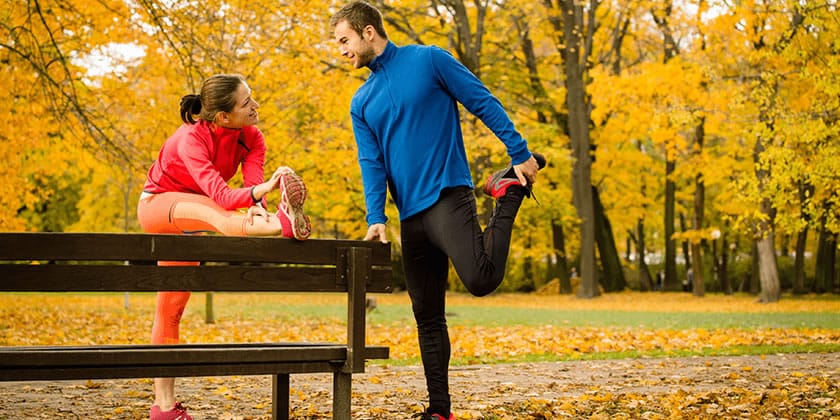6 reasons why you are getting running injuries

Around 70 per cent of runners sustain injuries every year according to the Australian Sports Commission. The good news is, most are caused by over-use and training errors, so with a little common sense it’s possible to prevent them.
Matt Geister has 25 years of experience as a manipulative physiotherapist, looking after sporting teams and high profile track and field athletes such as Melinda Gainsford-Taylor. He explains the main causes of injury and how to avoid them.
1. Over-training
About 90 per cent of running injuries are due to overtraining. People get excited about the idea of running and run long distances when their joints, muscles and tendons aren’t used to it.
Start gently and only increase your distance by ten per cent per week. Run on alternate days and try swimming, cycling or strength training on the other days. After four weeks, have a recovery week before you start increasing the distance again.
2. Incorrect footwear
Most people’s feet roll slightly in (pronate) or out (supinate) when they run. If the problem is severe, running shoes can correct that, but you do need expert advice. If you pronate and wear a shoe for a supinator – or vice versa – it could lead to injuries such as tendonitis or muscle pulls.
See a specialist retailer, physio or exercise physiologist who will watch you run and recommend the best shoe for you and may also recommend specific exercises to strengthen abnormalities. Don’t forget to invest in seamless socks to avoid blisters.
3. Lack of strength
Runners need core strength and pelvic stability. One-legged squats are excellent for both. Runners who don’t cross-train often have poor upper body strength, which affects posture especially when fatigued. It’s good to introduce a few pull-ups and push-ups into your training regime. Glute bridges, walking lunges, cable woodchops and deadlifts are also good. Get a trainer to check your technique or you risk further injury and reduce effectiveness. If you don’t have access to a gym, use a resistance band.
4. Ignoring pain
It’s possible to run through grade one injuries, but you’ll end up with a more serious problem that will take longer to heal. If you’re wincing when you get out of bed in the morning, it’s time to take a break and try a different activity. Water-based exercises are brilliant for recovery too.
5. Environment
Run on soft surfaces and they’ll adapt to your footstrike and absorb the impact. Hard surfaces like concrete don’t give, so choose grass, sand or dirt whenever you can. But while running up and down hills and leaping over logs and rocks is good, running on a camber such as a long beach is not. It can cause imbalances in the body leading to pulled muscles and lower back problems.
6. Lack of flexibility
It’s important to warm up properly and stretch after a run. Pushing tight muscles too hard will cause them to tear, especially when fatigued. Find a hip flexor stretch, hamstring stretch, glute stretch, and calf stretch you’re comfortable with, and do daily holding each one for 30 seconds.
Try some gentle jogging then controlled dynamic stretching before a session such as front and back straight leg kicks, high knee raises and arm circles.
Running is an easily accessible form of exercise for many of us. With some care and attention to your body maintenance, you can help prevent injuries and enjoy it even more.
Real Insurance is proud to sponsor the Sydney Harbour 10K and 5K runs. Learn more about the running event on 29 July and our role in the big day.
30 Apr 2018